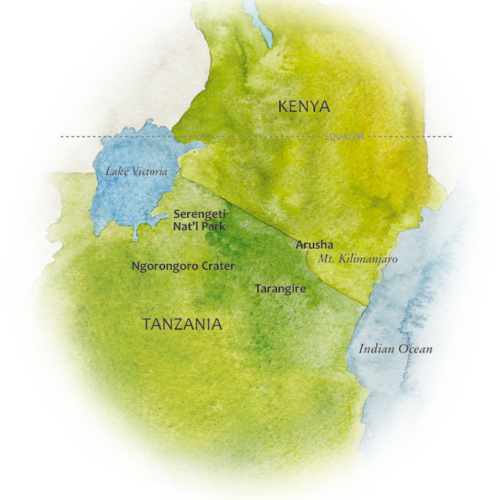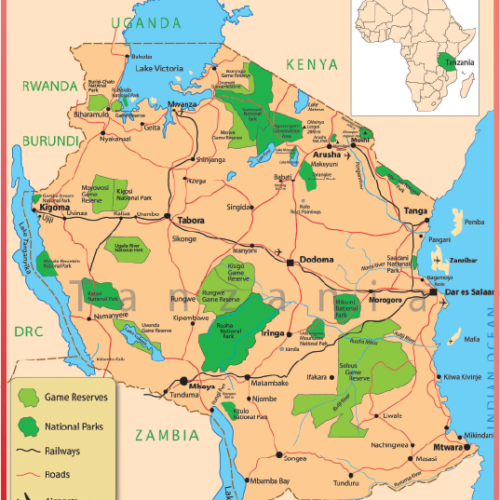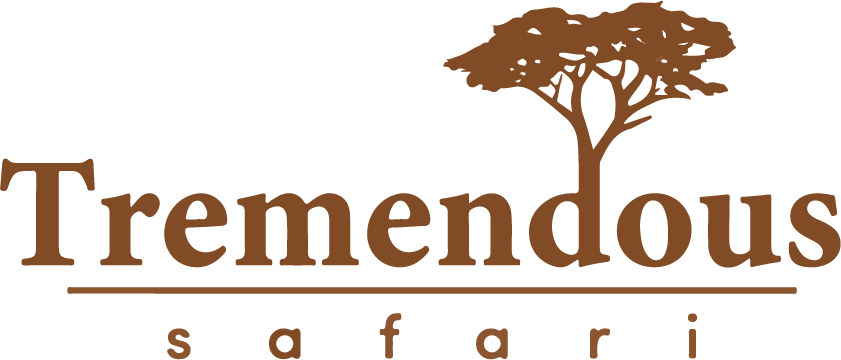About Us
We brief you with the the country which have most beauty in flora an fauna eversince
About Tanzania
Traveling in Tanzania means discovering natural beauty, exotic wildlife, mind-bending landscapes and encountering a rich culture woven from120 different tribal-based peoples living in remote areas of the African bush. You can visit the cradle of humanity where the Leakey’s unearthed the physical remains of the earliest human civilizations dating back 2 million years ago.
Over the past 20 years, Tanzania has emerged as one of Africa’s most dynamic and popular travel destinations. According to the Ministry of Tourism & Natural Resources, the tourism sector in Tanzania is growing at an impressive rate of 7% annually. In addition, the global tourism industry has also undergone rapid growth of unsurpassed nature. This has mainly been the result of a”borderless” world and increased information dissemination about the majestic sceneries throughout the world, with the East African region being of no exception. Tanzania is well known by vacationers as the “Land of Kilimanjaro and Zanzibar.”
Tanzania is located just 1 degree south of the equator. Tanzania borders Kenya to the north, Uganda to the northwest, Rwanda, Burundi and the Democratic Republic of the Congo to the west and southwest, Zambia, Malawi, and Mozambique to the south and southeast, and the Indian Ocean and the Spice Island Archipelago that includes Zanzibar to the east. Come to Tanzania and you will find yourself in the heart of sub-Saharan Africa.
Within the borders of Tanzania co-exist approximately 120 ethnic groups speaking languages representing all four major African language groups.
These include Khoisan, or “click” speaking hunter-gatherers, Nilotic-speaking pastoralists (such as the Maasai), Cushitic speakers, and Bantu speakers; the latter predominate in terms of population size. The largest ethnic groups include the Sukuma (over three million), and the Chagga, Haya, and Nyamwezi (over one million each). Despite the tremendous cultural and linguistic diversity among Tanzanians, ethnic groups are united by the use of a common language—Swahili—and a sense of national identity. The growing number of refugees (from neighboring Rwanda, Burundi, and Uganda in particular) do not appear to have caused serious ethnic tensions, but they have become a serious strain on the economy and the local environment.
Linguistic Affiliation and National Identity The national identity is influenced by several factors. One of the most important integrating forces is the use of the national lingua franca—Swahili, a language spoken and revered by nearly all Tanzanians. Swahili is a compulsory subject in schools, and some 83 percent of the population are literate. Equally important, of course, is Tanganyika’s independence and subsequent unification with Zanzibar to form the United Republic. Perhaps the most important influence on a sense of national identity was the development of Tanzanian socialism. The creation of Nyerere, Tanzanian socialism was codified in the Arusha Declaration of 1967.
Tanzania is known for its Sand, Sea and Sun. The Serengeti’s yearly moderate warm high temperature fluctuates between 70-84 degrees Fahrenheit. Zanzibar, off Tanzania’s eastern coast, fluctuates year-round between 80-92 degrees Fahrenheit. The long rainy season in Serengeti is March-June and its short rainy season is November-December. Safaris are available year-round and the most massive game migration is April-June and October-December. The best months to climb Kilimanjaro are in the spring and fall. The rim of the Ngorongoro Crater (elevation 7,264 ft.) remains cooler than other parts of the country.


Four Regions of Tanzania
Northern Tourist Circuit, though it offers tours throughout Tanzania. The Northern Circuit (i.e. Arusha and Kilimanjaro) has almost year-round appeal. The Northern Circuit includes Tanzania’s most visited national parks and most dramatic geological locations including Ngorongoro Crater and the Serengeti. Its world-famous national parks and most popular attractions include Mount Kilimanjaro and Kilimanjaro National Park, Arusha National Park, Tarangire National Park, Lake Manyara National Park, and Ngorongoro Crater (610 meters deep and 20 kilometers in diameter. A historical and archaeological site in Olduvai Gorge, Serengeti National Park and its eco-system which also encompasses Mount Oldonyo Lengai and Lake Natron.
The Eastern Tourist Circuit is emerging latest tourist circuit in Tanzania, which includes Pare and Usambara Mountains, Mkomazi and Saadani National Parks, the coastal area with Swahili towns and the islands of Mafia, Zanzibar and Pemba. The mainland’s more than 850 kilometers Indian Ocean coastline extending from Vanga on the Kenya/Tanzania border in the North to the Mwambo on the mouth of Ruvuma River in the South is the longest and most un-spoilt coastline in the continent of Africa. It has beautiful, un-crowded palm-clad beaches and undersea coral gardens, many within easy reach from major cities and towns such as Dar es Salaam, Pangani, Bagamoyo, Kilwa, and Mtwara.
Located offshore are the islands of Zanzibar and Pemba which are easily reached by a 20-minute flight or by boat from Dar es Salaam. The Dar es Salaam urban waterfront also faces the smaller islands of Bongoyo, Kendwa, Sinda and Mbudya. The Mafia Island which is a 40-minute flight to the South of Dar es Salaam is considered to be among one of the most exciting big game fishing and diving in the world according to various media outlets.
The Western Circuit is famous for its small national parks, which really provide very unique wildlife habitat, compared to those of other tourist circuits in the country. The included attractions in this zone are Lake Tanganyika, the national parks of Gombe, Katavi, and Mahale Mountain while the lake Victoria hinterland includes the wildlife sanctuaries of Rubondo, Biharamulo with the inclusion of Orungondu, Buringi, and rumanyika Game Reserves. Gombe National Park is the smallest park with an approximate population of over 150 chimps, these chimps are well habituated and sightings are almost guaranteed. The Gombe Stream is whereby in 1960 British Researcher Jane Goodall arrived to begin the study of wild chimpanzees. Goodall’s study is now in its fifth decade. Mahale National Park is the most isolated national park and is primarily a chimpanzee sanctuary. Mahale also hosts populations of baboons, warthogs, and bushbucks which are scattered every in the park as well as less visible buffaloes, zebras, antelopes, and leopards.
The Southern Tourist Circuit is the tourist zone that includes mainly national parks and game reserves. Included national parks and game reserves in this zone are Ruaha National Park together with neighboring Rungwa and Kisigo Game Reserves and several smaller conservation areas, which form the core of a wild and extended ecosystem covering about 40,000 sq km and providing a home to one of Tanzania’s largest elephant populations. The Mikumi National Park is another wildlife attraction in this circuit. Mikumi is part of the vast Selous ecosystem and it is Tanzania’s fourth largest National Park with an area of 3,230 sq km. The Selous Game Reserve is approximately 45,000 sq km, it is one of Africa’s largest wildlife reserves, although only the northernmost section is open to tourism and this is where it bordered Mikumi. Other tourist attractions in this tourist circuit are Udzugwa National Park, Kitulo National Park, and Lake Nyasa in the Southern end of the country and of course the Swahili towns of Mnazi Bay, Kilwa Masoko and many others.
Visit Tanzania and experience various hands-on recreational activities such as walking, trekking, mountain climbing, birding, game tracking, mountain hiking, canoeing, biking, and diving in scenic waterfalls. Off Tanzania’s east coast, enjoy the Spice Island Archipelago that includes Zanzibar and snorkel in its coral reefs, dive with the dolphin, sail on dhows off its coast, visit spice plantations, learn about its unique history and visit its former slave markets. You can meet, experience and participate in the daily lives of Tanzania’s friendly colorful traditional tribal-based peoples living in remote areas of the African bush such as the Maasai, Datoga, Sonjo, and Hadzabe through Zinga’s culturally sensitive cultural visits. You can also, literally, dig into Tanzania’s archeological past at Olduvai Gorge in the Serengeti Plain where paleontologists discovered fossil evidence of the earliest humans from 3 million years ago, making Tanzania the birthplace of humanity.
